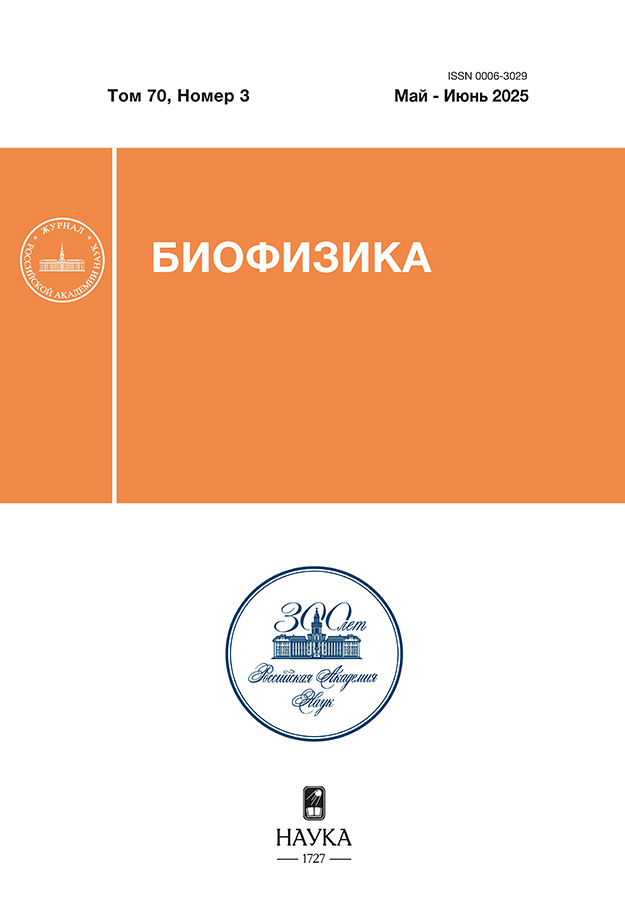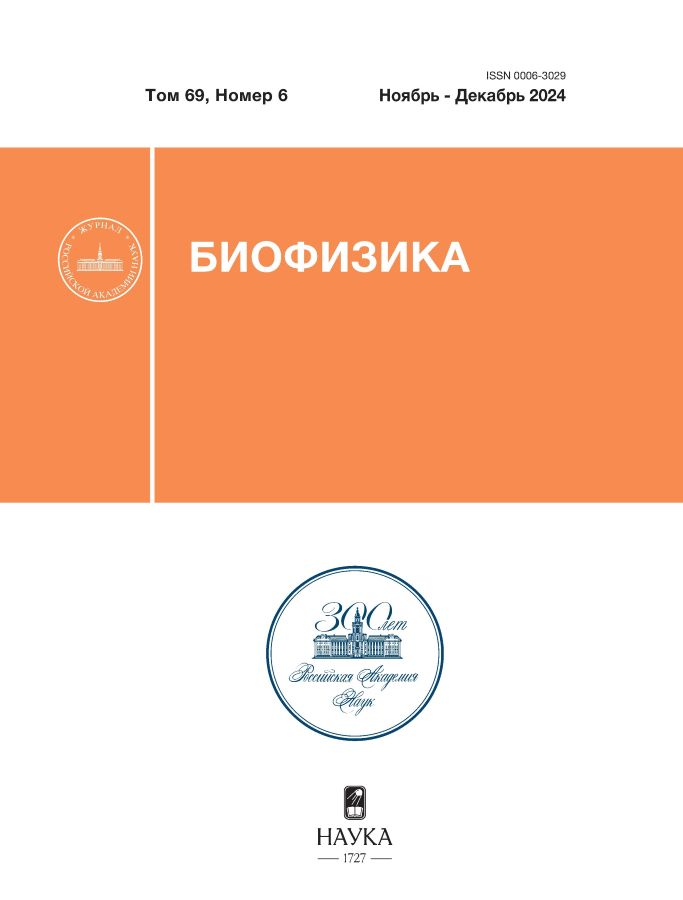Morphological Features and Temporary Characteristics of the Process of Muscle Tissue Regeneration in Planaria Polycelis tenuis (Platyhelminthes)
- Authors: Kuznetsov G.V1, Kreshchenko N.D1
-
Affiliations:
- Institute of Cell Biophysics, Russian Academy of Sciences
- Issue: Vol 69, No 6 (2024)
- Pages: 1291-1299
- Section: Complex systems biophysics
- URL: https://kld-journal.fedlab.ru/0006-3029/article/view/676183
- DOI: https://doi.org/10.31857/S0006302924060148
- EDN: https://elibrary.ru/NKLBTN
- ID: 676183
Cite item
Abstract
A body musculature of the planarian Polycelis tenuis (Turbellaria, Platyhelminthes) has been investigated by fluorescence microscopy using histochemical staining of whole preparations with fluorescently-labeled phalloidin, which stains muscle cells due to irreversible binding to actin filaments. The results showed that the musculature of the body wall contains circular, diagonal and longitudinal muscle fibers. The circular fibers are the thinnest ones and densely located within the outer layer of the muscle. The longitudinal fibers are thick, gathered into bundles. Individual diagonal muscle fibers are located at a significant distance, in two directions and at an angle to each other. In the work, the process of muscle tissue regeneration in P. tenuis is considered after removal of the planarian’s head. The current study investigates tissue regeneration on days 3, 5, 7, 10 and 13 following tissue amputation. The microscopy images provided valuable information about the main stages of muscle tissue regeneration and their characteristic features. It has been shown that the muscular system in P. tenuis has awesome regenerative abilities and tissue is regenerated within 10–13 days.
About the authors
G. V Kuznetsov
Institute of Cell Biophysics, Russian Academy of Sciences
Email: Mansurg999@yandex.ru
Pushchino, Russia
N. D Kreshchenko
Institute of Cell Biophysics, Russian Academy of SciencesPushchino, Russia
References
- Шейман И. М., Крещенко Н. Д. и Нетреба М. В. Процесс регенерации у планарий разных видов. Онтогенез, 41 (2), 114-119 (2010).
- Тирас Х. П., Петрова О. Н., Мякишева С. Н. и Асланиди К. Б. Формирование регенерационной бластемы у планарии Girardia tigrina. Фундаментальные исследования, 7, 493-500 (2015). EDN: UEAHIF
- Никанорова Д. Д., Купряшова Е. Е. и Костюченко Р. П. Регенерация у аннелид: клеточные источники, тканевые перестройки и дифференциальная экспрессия генов. Онтогенез, 51 (3), 177-192 (2020). doi: 10.31857/S0475145020030040
- Rink J. C. Stem cell systems and regeneration in planaria. Dev. Genes Evol., 223, 67-84 (2013). doi: 10.1007/s00427-012-0426-4
- Bowen D., den Hollander J. E., and Lewis G. H. J. Cell death and acid phosphatase activity in the regenerating planarian Polycelis tenuis. Differentiation, 21, 160 (1982).
- Molina M. D. and Cebrià F. Decoding stem cells: an overview on Planarian stem cell heterogeneity and lineage progression. Biomolecules, 11 (10), 1532 (2021). doi: 10.3390/biom11101532
- Mair G. R., Maule A. G., Shaw C., and Halton D. W. Muscling in on parasitic flatworm. Parasitol. Today, 14 (2), 73-76 (1998). doi: 10.1016/s0169-4758(97)01182-4
- Kreshchenko N. D. Some details on the morphological structure of planarian musculature identified by fluorescent and confocal laser-scanning microscopy. Biophysics, 62 (2), 271 (2017).
- Reuter M., Mäntylä K., and Gustafsson M. K. S. Organization of the orthogon - main and minor nerve cords. Hydrobiologia, 383, 175-182 (1998). doi: 10.1023/A:1003478030220
- Mair G. R., Maule A. G., Day T. A., and Halton D. W. A confocal microscopical study of the musculature of adult Schistosoma mansoni. Parasitology, 121, 163—170 (2000). doi: 10.1017/s0031182099006174
- Tolstenkov O. O., Prokofiev V. V., Terenina N. B., and Gustafsson M. K. S. The neuro-muscular system in Cercaria with different patterns of locomotion. Parasitol. Res., 108,1219-1227 (2011). doi: 10.1007/s00436-010-2166-6
- Cebria F., Vispo M., Bueno D., Carranza S., Newmark P., and Romero R. Myosin heavy chain gene in Dugesia (G.) tigrina: A tool for studying muscle regeneration in planarians. Int. J. Dev. Biol., Suppl. 1, 177S-178S (1996). PMID: 9087750
- Cebria F. and Romero R. Body-wall muscle restoration dynamics are different in dorsal and ventral blastemas during planarian anterior regeneration. Belg. J. Zool., 131 (1), 5-9 (2001).
- Orii H., Ito H., and Watanabe K. Anatomy of the planarian Dugesia japonica I. The muscular system revealed by antisera against myosin heavy chains. Zoolog. Sci., 19 (10), 1123-1131 (2002). doi: 10.2108/zsj.19.1123
- Morita M., Best J. B., and Noel J. Electron microscopic studies of planarian regeneration. I: Fine structure of neoblasts in Dugesia dorotocephala. J. Ultrastructure Res., 27, 7 (1969). doi: 10.1016/S0022-5320(69)90017-3
- Planarian Regeneration: Methods and Protocols. Ed. by J.C. Rink (Methods Mol. Biol., Vol. 1774, 2018). doi: 10.1007/978-1-4939-7802-1
- Wulf E., Deboben A., Bautz F. A., Faulstich H., and Wieland T. Fluorescent phallotoxin, a tool for the visualization of cellular actin. Proc. Natl. Acad. Sci. USA, 76 (9), 4498-4502 (1979). doi: 10.1073/pnas.76.9.4498
- Maule A. G., Mair G. R., and Halton D. W. The neuromuscular system of the sheep tapeworm Moniezia expansa Invertebrate Neuroscience, 20, 17 (2020). doi: 10.1007/s10158-020-00246-2
- Krupenko D. Y. Muscle system of Diplodiscus subclavatus (Trematoda: Paramphistomida) cercariae, pre-ovigerous, and ovigerous adults. Parasitol. Res., 113, 941 (2014). doi: 10.1007/s00436-013-3726-3
- Pascolini R., Panara F., Di Rosa I., Fagotti A., and LorvikS. Characterization and fine-structural localization of actin-and fibronectin-like proteins in planaria (Dugesia lugubris s. l.). Cell Tissue Res., 267, 499 (1992). doi: 10.1007/BF00319372
- Крещенко Н. Д. Изучение роли серотонина в мышечной функции у планарий. Биол. мембраны, 37 (1), 34-44 (2020). doi: 10.31857/S0233475520010065
- Толстенков О. О., Теренина Н. Б., Шалаева Н. М. и Гайворонская Т. В. Организация мышечной системы и распределение NO-ергических и серотонинергических элементов у трематод Allocreadium isoporum Looss, 1894 (Allocreadiidae) и Paramphistomum cervi Zeder 1790 (Paramphistomatidae). Зоология беспозвоночных, 4 (2), 139 (2007).
- Salo E. and Baguna J. Regeneration and pattern formation in planarians. II. Local origin and role of cell movements in blastema formation. Development, 107 (1), 69-76 (1989). doi: 10.1242/dev.107.1.69
- Salo E., Abril J. F., Adell T., Cebria F., Eckelt K., Fernandez-Taboada E., Handberg-Thorsager M., Iglesias M., Molina M. D., and Rodriguez-Esteban G. Planarian regeneration: achievements and future directions after 20 years of research. Int. J. Dev. Biol., 53 (8-10), 1317-1327 (2009). doi: 10.1387/ijdb.072414es
- Reuter M., Sheiman I. M., Gustafsson M. K. S., Halton D. W., Maule A. G., and Shaw C. Development of the nervous system in Dugesia tigrina during regeneration after fission and decapitation. Invertebrate Reproduction and Development, 29 (3), 199-211 (1996). doi: 10.1080/07924259.1996.9672514
- Bueno D., Baguna J., and Romero R. Cell-, tissue-, and position-specific monoclonal antibodies against the planarian Dugesia (Girardia) tigrina. Histochem. Cell. Biol., 107 (2), 139-149 (1997). doi: 10.1007/s004180050098
- Kreshchenko N. D., Reuter M., Sheiman I. M., Halton D. W., Johnston R. N., Shaw C., and Gustafsson M. K. S. Relationship between musculature and nervous system in the regenerating pharynx in Girardia tigrina (Plathelminthes). Invertebrates Reproduction and Development, 35 (2), 109-125 (1999). doi: 10.1080/07924259.1999.9652375
- Cebria F., Vispo M., Newmark P. A., Bueno D., and Romero R. Myocyte differentiation and body wall muscle regeneration in the planarian Girardia tigrina. Dev. Genes Evol., 207 (5), 306-316 (1997). doi: 10.1007/s004270050118
- Fraguas S., Barberan S., and Cebria F. EGFR signaling regulates cell proliferation, differentiation and morphogenesis during planarian regeneration and homeostasis. Dev. Biol., 354 (1), 87-101 (2011). doi: 10.1016/j.ydbio.2011.03.023
- Fraguas S., Barberan S., Iglesias M., Rodriguez-Esteban G., and Cebria F. egr-4, A target of EGFR signaling, is required for the formation of the brain primordia and head regeneration in planarians. Development, 141 (9), 1835 (2014). doi: 10.1242/dev.101345
- Fraguas S., Umesono Y., Agata K., and Cebria F. Analyzing pERK activation during planarian regeneration. Methods Mol. Biol., 1487, 303-315 (2017). doi: 10.1007/978-1-4939-6424-6_23
Supplementary files











